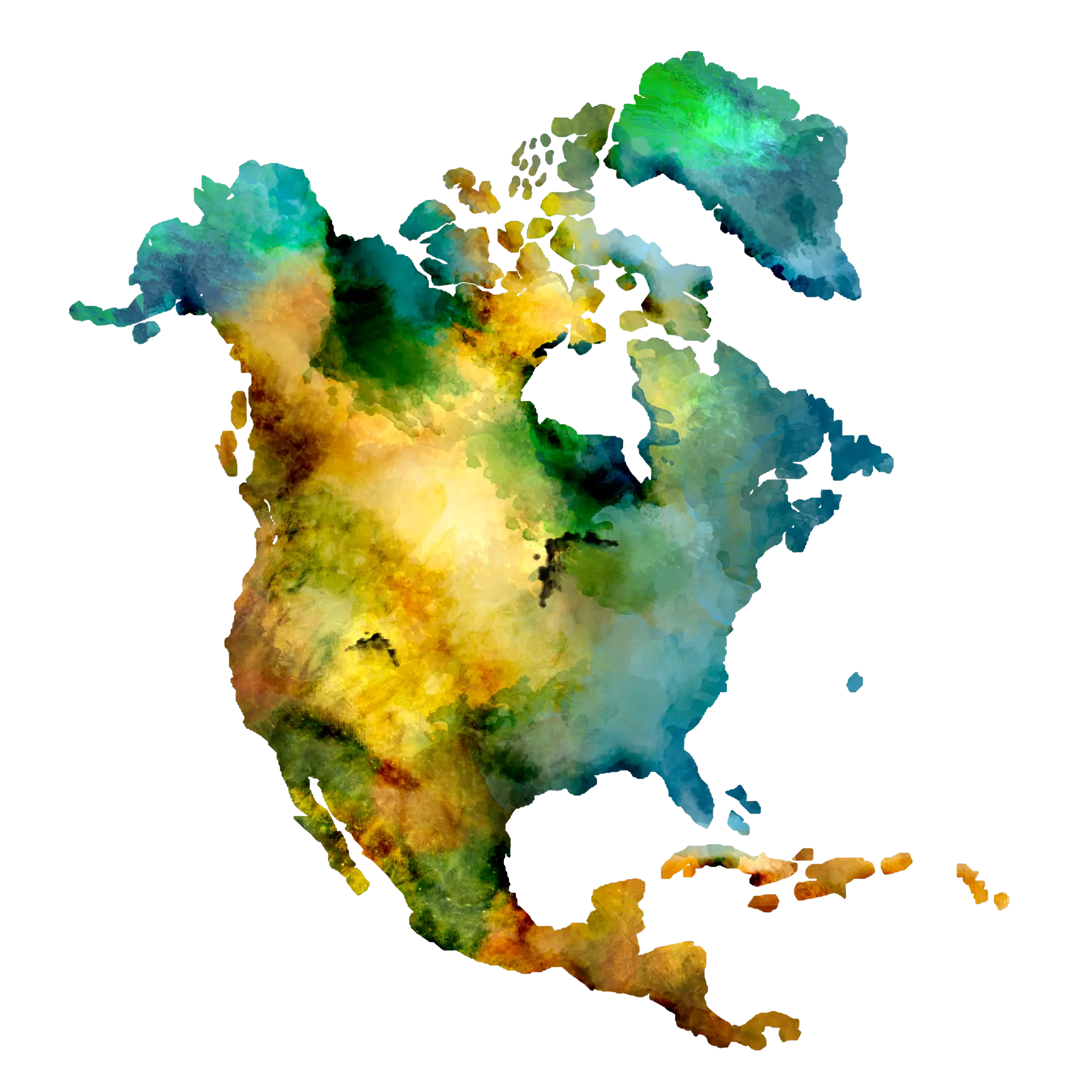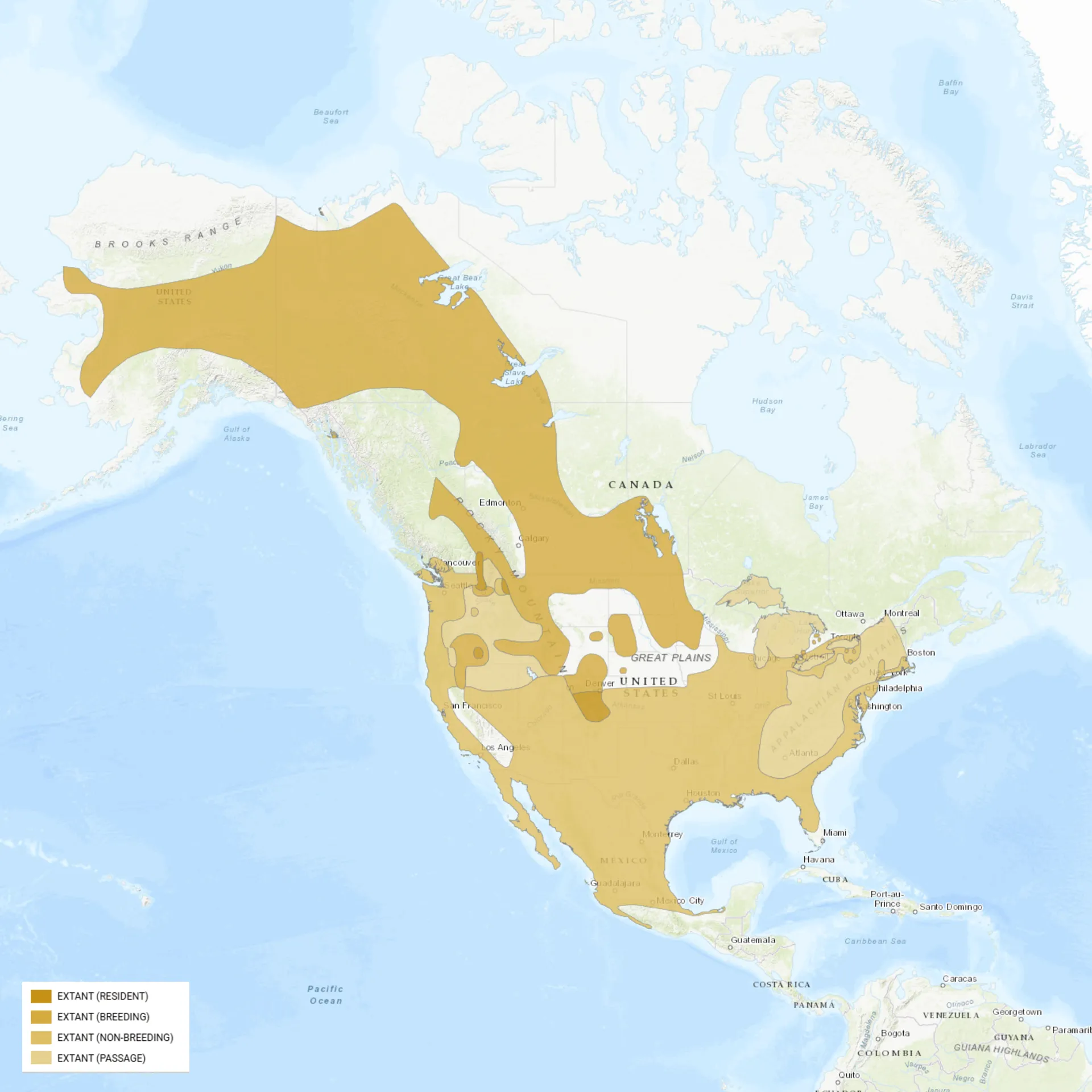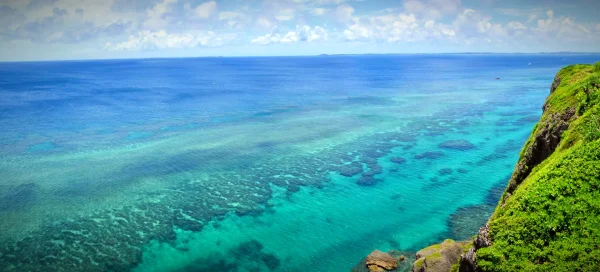Overview
The Canvasback, Aythya valisineria, is a distinctive diving duck species known for its elegant profile and striking appearance. It features a unique wedge-shaped head and long, sloping bill, setting it apart from other waterfowl. The male Canvasback boasts a striking contrast with its bright white back, black chest and tail, and reddish head and neck, while the female is dressed in more subdued tones of brown and gray, maintaining the species’ characteristic silhouette. These ducks are highly adapted to aquatic life, with powerful legs set back on their bodies to aid in efficient diving, enabling them to reach submerged aquatic vegetation, their primary food source.
Canvasbacks are migratory birds, breeding in the prairie potholes of North America and wintering in the southern United States and northern Mexico, where they frequent large, open waters. Their remarkable migration showcases their endurance and the importance of wetland habitats along their route. The Canvasback’s diet primarily consists of aquatic plants, particularly wild celery, from which it derives its species name, valisineria. This preference influences their habitat selection and is crucial to their breeding success.
Despite their elegance and role in wetland ecosystems, Canvasbacks have faced habitat loss, water pollution, and hunting pressure challenges. Conservation efforts focused on wetland restoration and protection have been critical in supporting their populations. The Canvasback serves as a barometer for the health of wetland habitats, with their presence indicating a thriving aquatic ecosystem.
Taxonomy
Kingdom
Phylum
Class
Order
Family
Genus
Species
Type
Current distribution:
Canvasbacks have a wide range in North America, with breeding populations concentrated in the prairie pothole region of Canada and the northern United States. Their wintering grounds extend from the southern United States into Mexico, with large congregations in the Chesapeake Bay, the Great Lakes, and along the Gulf of Mexico. The distribution of Canvasbacks during the breeding and wintering seasons highlights the need for conservation efforts across a broad geographic range to protect critical habitats at all life cycle stages.
Despite facing pressures from habitat loss and environmental pollution, conservation measures have helped maintain stable populations of Canvasbacks. Ongoing research and monitoring are essential to understanding the impacts of environmental changes on their habitats and to guide conservation strategies.
Physical Description:
Canvasbacks are large ducks, with adults typically measuring between 19 and 24 inches long and boasting a wingspan of approximately 31 to 35 inches. Males, or drakes, are easily recognizable by their striking white bodies, contrasting black chests and tails, and distinctive reddish heads and necks. The females, in contrast, are clothed in muted tones of brown, with a paler brown or gray head, yet both sexes share the characteristic sloping profile and black bill.
Their bodies are built for diving, with large webbed feet positioned towards the rear, enabling them to propel through water easily in search of food. The Canvasback’s eyes are set high on its head, allowing for better visibility underwater. Their plumage is beautiful and highly functional, providing excellent insulation against cold water during their dives. This combination of features makes the Canvasback a master of its aquatic environment, capable of reaching depths other ducks cannot.

Lifespan: Wild: ~10 Years || Captivity: ~20 Years

Weight: Male: 2.7–3.5 lbs (1.2–1.6 kg) || Female: 2.2–2.9 lbs (1.0–1.3 kg)

Length: Male: 19–24 in (48–61 cm) || Female: 18–22 in (46–56 cm)

Height: Male: 16–20 in (41–51 cm) || Female: 15–18 in (38–46 cm)

Wingspan: Male & Female: 28–36 in (71–91 cm)

Top Speed: 70 mph (113 km/h)
Characteristic:
Native Habitat:
Canvasbacks breed in the prairie pothole region of North America, an area known for its dense concentration of wetlands, which provide ideal conditions for nesting and rearing their young. They prefer shallow wetlands with abundant aquatic vegetation for feeding and concealed nesting sites among the vegetation to protect against predators. During the winter, Canvasbacks migrate to coastal bays, estuaries, and large freshwater lakes in the southern United States and northern Mexico, where open water provides access to food and shelter from harsh weather.
Their dependence on wetlands makes the conservation of these habitats critical for the survival of Canvasback populations. These habitats support the ducks’ breeding and feeding needs and a diverse array of other species, underscoring the ecological importance of wetland conservation.
Climate Zones:
Biomes:
Biogeographical Realms:
Continents:
Diet:
Diet & Feeding Habits:
Canvasbacks are primarily herbivorous, feeding extensively on submerged aquatic vegetation, with wild celery (Vallisneria americana) being a favored food source. They also consume pondweeds, water lilies, and various seeds, especially during migration and winter. Although plant matter is most of their diet, they occasionally consume small aquatic invertebrates such as mollusks, insects, and crustaceans. Their broad, specialized bill allows them to efficiently grasp and uproot underwater plants while diving.
These ducks are skilled divers, often foraging at depths of up to 7 feet (2.1 meters) to reach food. They can remain submerged for 20–30 seconds while searching for vegetation and small prey. In areas where natural food sources decline, they may shift to feeding on agricultural grains such as corn and rice. In captivity, their diet is supplemented with grains, greens, and protein sources to ensure proper nutrition.
Mating Behavior:
Mating Description:
Canvasbacks are monogamous during the breeding season, with pairs forming on the wintering grounds before migrating north to their breeding sites. Courtship involves elaborate displays, including head-pumping, bill dipping, and calling. These displays strengthen pair bonds and synchronize breeding activities. Nesting sites are selected in dense wetland vegetation, providing concealment from predators. The female constructs the nest from the plant material and lines it down, where she lays 7 to 10 eggs.
The incubation lasts about 23 to 29 days, during which the female incubates the eggs while the male guards the territory. Once hatched, the ducklings are precocial, able to swim and feed themselves shortly after birth, but they remain under the protection of the female until they are ready to fly at about 60 to 70 days old. The care provided by the female during this period is crucial for the survival of the young, protecting them from predators and guiding them to feeding areas.
Reproduction Season:
Birth Type:
Pregnancy Duration:
Female Name:
Male Name:
Baby Name:
Social Structure Description:
Conservation efforts for the Canvasback include protecting and restoring wetland habitats, implementing sustainable water management practices, and reducing pollution. The success of these efforts relies on collaboration among conservation organizations, government agencies, and local communities. Programs that encourage using non-toxic alternatives to lead shot and promote safe fishing practices help reduce direct threats to Canvasbacks and other waterfowl.
Educational outreach and engagement with the public raise awareness about the importance of wetlands and the need for conservation. Research and monitoring programs provide valuable data on population trends, habitat use, and the effectiveness of conservation measures, guiding future efforts to ensure the long-term survival of the Canvasback and the health of wetland ecosystems.
Groups:
Conservation Status:
Population Trend:
The Canvasback is currently listed as Least Concern by the IUCN Red List, indicating that, on a global scale, the species is not considered at immediate risk of extinction. However, local populations can be affected by habitat degradation, pollution, and climate changes, which can influence their breeding success and survival. Conservation efforts, including wetland restoration and protection, are vital for maintaining healthy populations of Canvasbacks and the ecosystems they inhabit.
Monitoring Canvasback populations is ongoing, with waterfowl surveys conducted regularly to assess trends and inform management strategies. These efforts, combined with legal protections and habitat conservation initiatives, have contributed to the stability of Canvasback populations, demonstrating the success of targeted conservation actions.
Population Threats:
The primary threats to Canvasbacks include loss and degradation of wetland habitats due to agricultural expansion, urban development, and pollution. Wetlands are crucial for breeding, feeding, and resting, making their conservation essential for the survival of this species. Lead poisoning from ingested spent shot, as well as entanglement in fishing gear, poses significant risks. Climate change also threatens to alter the distribution and quality of their aquatic habitats, impacting food availability and breeding sites.
Efforts to mitigate these threats include habitat restoration, pollution control, and enforcing hunting regulations. Addressing the challenge of climate change requires broader conservation strategies to protect wetland ecosystems and ensure the resilience of waterfowl populations.
Conservation Efforts:
Conservation efforts for the Canvasback include protecting and restoring wetland habitats, implementing sustainable water management practices, and reducing pollution. The success of these efforts relies on collaboration among conservation organizations, government agencies, and local communities. Programs that encourage using non-toxic alternatives to lead shot and promote safe fishing practices help reduce direct threats to Canvasbacks and other waterfowl.
Educational outreach and engagement with the public raise awareness about the importance of wetlands and the need for conservation. Research and monitoring programs provide valuable data on population trends, habitat use, and the effectiveness of conservation measures, guiding future efforts to ensure the long-term survival of the Canvasback and the health of wetland ecosystems.
Additional Resources:
Fun Facts
- The Canvasback’s scientific name, Aythya valisineria, is derived from Vallisneria americana, the wild celery that forms a significant part of its diet.
- Canvasbacks can dive up to 30 feet deep to forage for aquatic vegetation.
- Their distinctive wedge-shaped head and long bills make them one of the most easily identifiable duck species.
- Canvasbacks are known for their powerful, graceful flight, capable of reaching speeds up to 60 mph.
- The decline in wild celery and other aquatic plants in some areas has led to conservation efforts focused on improving water quality and habitat restoration.
- Canvasbacks play a key role in wetland ecosystems, helping to control aquatic plant populations and serving as indicators of habitat health.
- Creating artificial nesting platforms and restoring wetland areas have helped stabilize Canvasback populations in some regions.
- Canvasbacks have a special gland near their tail that produces oil, which they spread over their feathers to waterproof them.
- They are highly prized by birdwatchers and hunters alike for their beauty and the challenge they present in hunting.
- Conservation measures for Canvasbacks have been successful in many areas, demonstrating the positive impact of targeted habitat management and protection efforts.






















































































